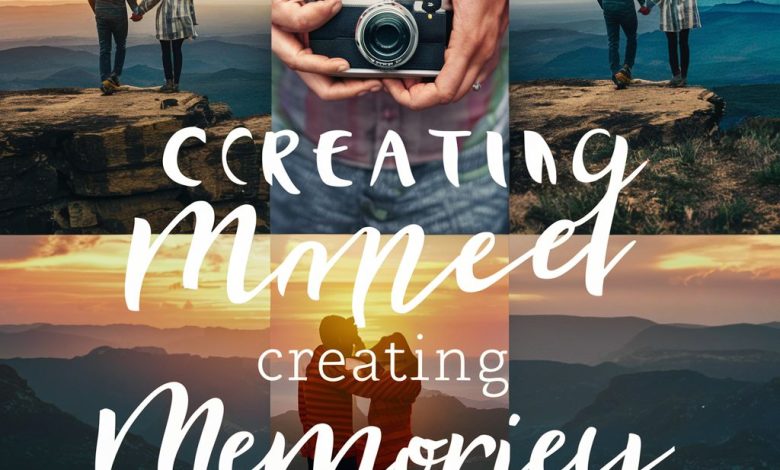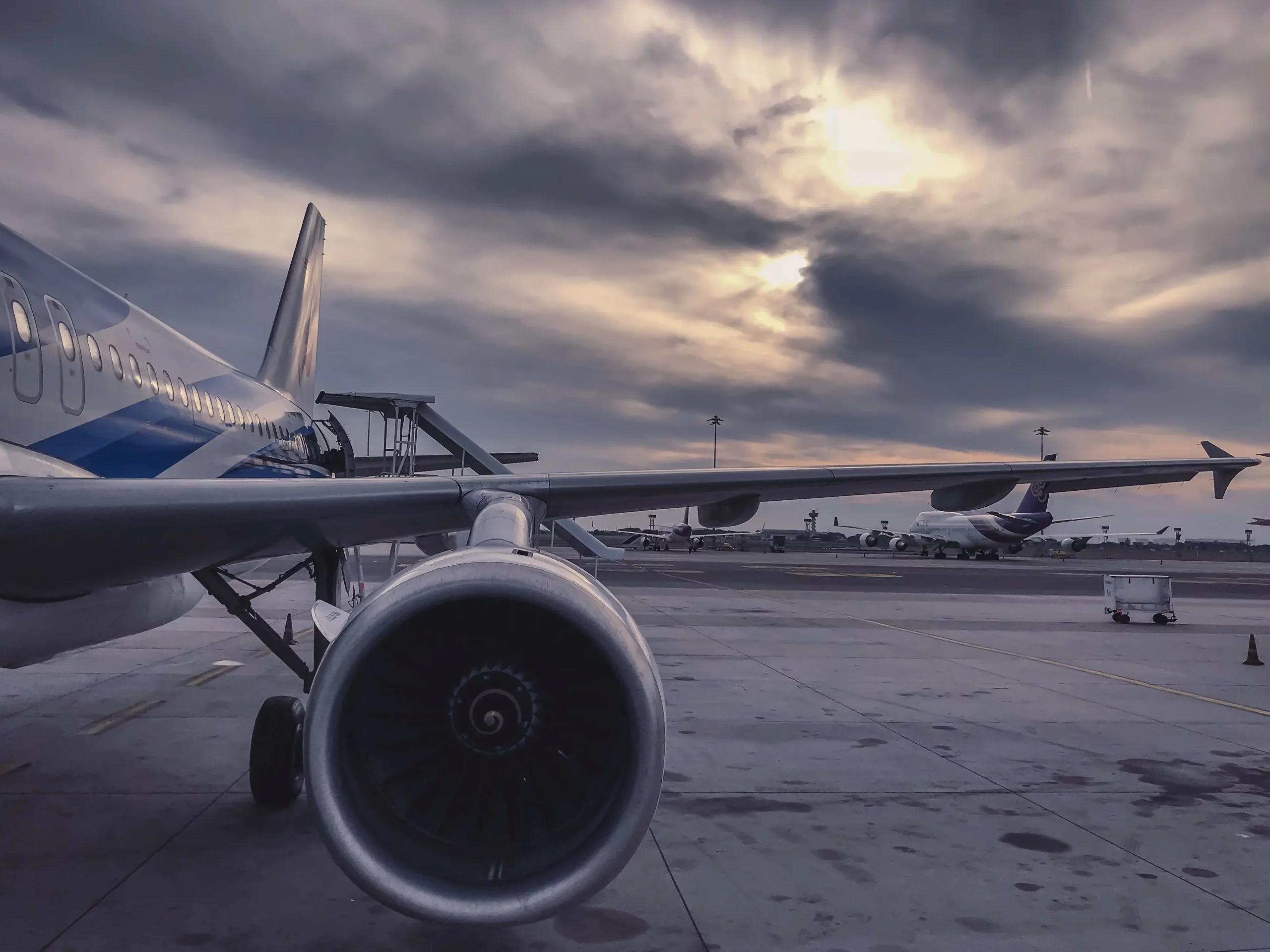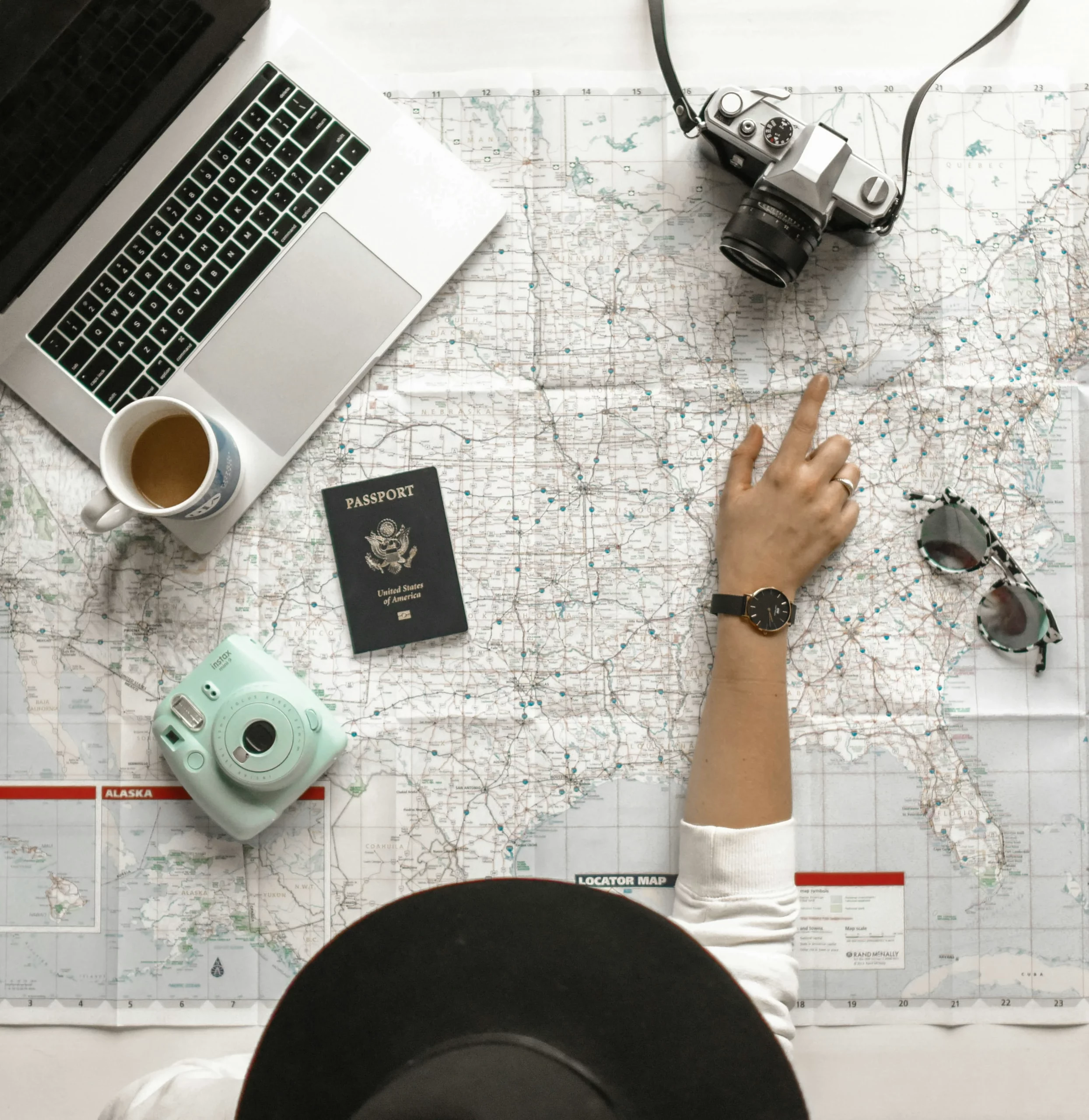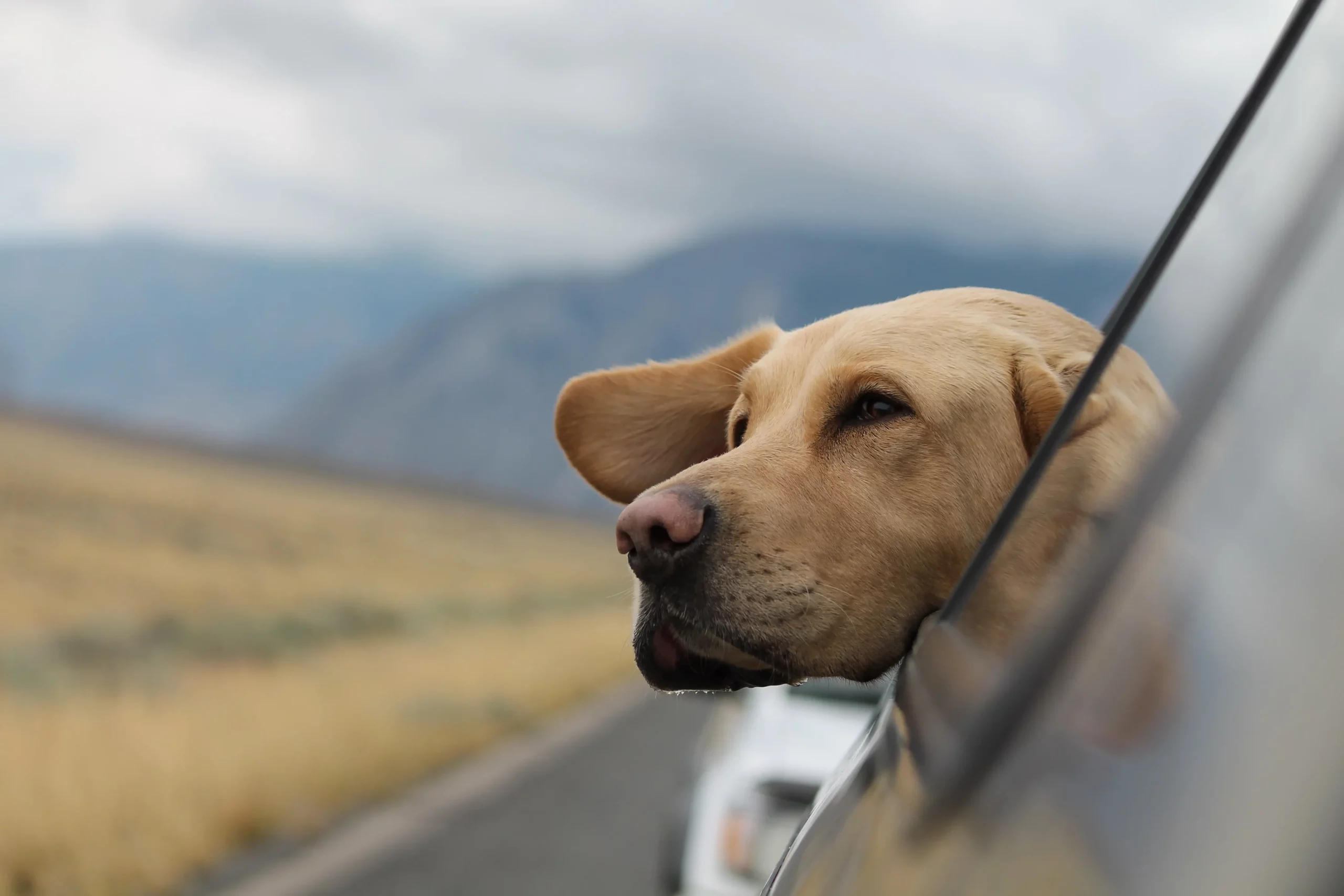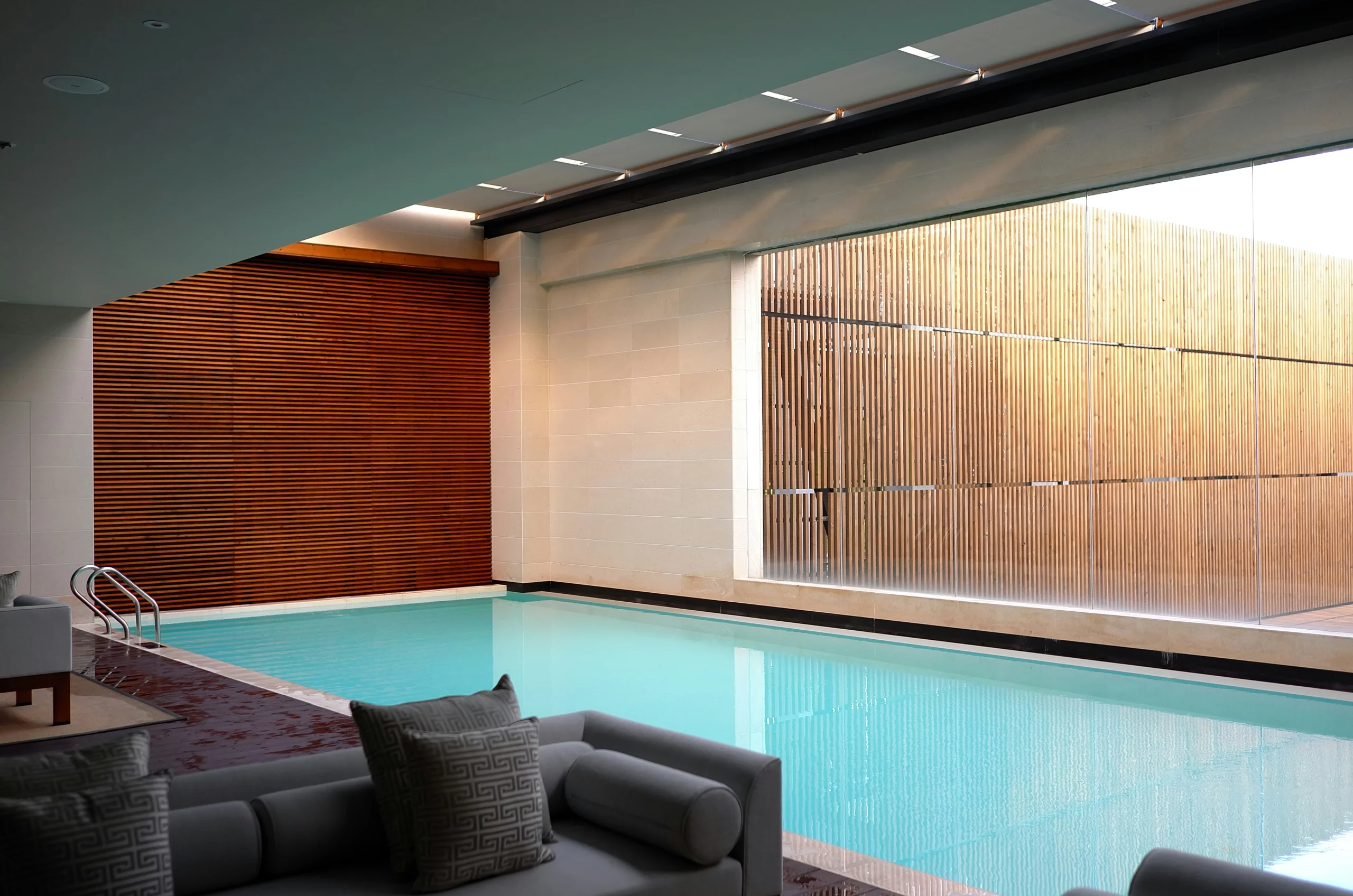Travel Photography: Capture Memories
Who said a picture is worth a thousand words? In the realm of travel photography, a picture encapsulates an entire experience – it’s a passport to yesterday, a treasure chest of vivid memories waiting to be unlocked. How can we transform these fleeting moments into timeless keepsakes, to be relived and shared with the world? The answer lies in mastering the art of travel photography.
Get ready to embark on a fascinating journey to capture unforgettable memories through your lens. Navigate your path with handy photography tips that will equip you with the skills to immortalize your travel stories. So, are you ready to make every click count?
Key Takeaways:
- Travel photography is more than just creating images; it’s about documenting unique journeys, emotions, and experiences.
- Mastering travel photography involves understanding the essence of your destination and telling its story through your lens.
- Effective travel photography techniques can enhance the visual appeal of your pictures and make them captivating narratives.
- Choosing your photography gear wisely will ensure that you are equipped for different scenarios and produce stunning images.
- Quality of photos in travel photography is primarily determined by your knowledge of camera settings, framing, and timing, rather than the camera itself.
- Post-production can significantly improve your images, but the real magic lies in capturing the essence of your travel in the original shot.
- Creating a comprehensive travel photography portfolio can help you share your experiences wide and far, as well as showcase your unique perspective and skills.
Embracing the Journey Through the Lens
Travel photography is an exquisite medium that captivates the soul, embraces the spirit of a place, and unfolds untold stories. It’s one part talent, one part love for the destination, and one part being open to what comes your way. Let’s dive into understanding the fundamentality of travel photography, the art of storytelling through your photos, and the significance of being in the moment.
Understanding the Essence of Travel Photography
What sets apart travel photography from other photography genres is its ability to capture the spirit and emotions of a place. It’s not about just capturing the beautiful landscapes but also the people, traditions, and livelihood that weave the cultural fabric of a destination. A good composition can serve as a visual narrative that stirs emotions and invokes curiosity.
To understand the basics of photography composition, one must have a keen eye for detail and a knack for creative thinking. This skill is critical to translate your vision into captivating images that tell a story.
Telling a Story With Every Shot
Travel photography serves as a visual diary where every shot has a poignant tale to tell. It’s a powerful medium that allows you to narrate your adventures abroad, celebrate diversity and immortalize the fleeting nature of time and space. The goal here is not just to capture a stunning scene but to narrate a compelling story through your photography.
Here are some photography tips to aid storytelling:
- Focus on the subject that defines the character of the place
- Include locals in your frame to authenticate the cultural vibe
- Use lighting to accentuate the mood of the scene
- Compose your shots in a way that guides the viewer’s eye to explore the image
- Experiment with angles and perspectives
The Importance of Being Present
It’s easy to get caught up trying to capture everything that we often forget to experience the destination. Being present during your travels not only enhances your mindfulness but also helps you perceive the essence of the place in its purest form.
Striking a balance between experiencing the moment and capturing it through photography is crucial for truly immersive travel photography. Avoid looking at the destination through the viewfinder alone. Stepping back and observing the surroundings lets you appreciate the subtleties and helps in composing more thoughtful shots.
“The single most important component of a camera is the twelve inches behind it.” – Ansel Adams
Incorporate these considerations into your travel photography approach and you’ll find yourself creating more compelling and meaningful images that make a difference. Stay tuned for more insights and photography tips as we explore further into the world of travel photography.
Mastering the Art of Photography Composition
Travel photography is an art that encompasses much more than snapping a quick photo here and there. It’s about capturing the narrative of a place, its atmosphere, people, and diverse landscapes. Of paramount importance in achieving enticing images is understanding the key principles of photography composition.
Photography composition refers to the arrangement of visual elements in an image. It’s the way a photographers use lines, shapes, color, and light to capture an image that is aesthetically pleasing to the viewer. By mastering these fundamental principles, you can transform disparate elements into a cohesive, inspiring story. This is the critical bridge that separates amateur snapshots from professional travel photography.
Let’s delve into the key principles of photography composition that can help you enhance your travel photos:
- Framing: The process of selectively viewing the scene to focus the viewers’ attention on the essential aspects and eliminate distracting elements.
- Perspective: Influencing depth and scale by altering the camera’s height or distance from the subject.
- Leading lines: Lines that guide the viewer’s eye towards the main subject or further into the image.
Understanding and utilizing these principles, you can push your skills beyond typical holiday snapshots, create visually appealing images and transform them into captivating stories of your journey. Below is a detailed table that signifies these principles and their effect on enhancing your photography skills:
| Composition Principle | Description | Why it’s vital in travel photography |
|---|---|---|
| Framing | Creating a visual context around the main subject to focus viewers’ attention. | Eliminates distracting elements and emphasizes the main subject, enhancing storytelling capabilities. |
| Perspective | Changing the camera’s height or angle for unique viewpoints. | Creates a sense of depth and scale, bringing life to static landmarks and scenery. |
| Leading Lines | Using lines to guide viewers’ eye into the image. | Creates depth and dynamism, engaging viewers to explore further into the image. |
Mastering the art of composition is the gateway to professional travel photography, enabling you to artistically express your travel experiences.
Photography is distinctly a blend of science and art. While the underlying technology aids us, it’s the art of identifying potential compositions during your voyage that truly aids in taking your travel photography to new heights.
Choosing the Right Photography Gear for Your Adventure
When embarking on a journey, your photography gear is an extension of your creative vision. It allows you to capture the world as you see it, making it essential to choose the right equipment.
Determining the best travel cameras, lenses, and accessories depends heavily on your shooting style, budget, and travel scenario. Here’s how to make the perfect selection.
Firstly, evaluate the unique features of potential camera bodies. Think about the types of travel photographs you intend to capture. Landscapes may call for a wide-angle lens while wildlife photography may require a robust zoom capability.
Next, think about the portability. If you’re a hiker, a heavy DSLR might add unnecessary weight to your backpack. A compact mirrorless camera or even a high-end point-and-shoot could be more suitable. Remember, the best camera is the one you have with you.
Finally, consider your budget. While the priciest gear often has more features, you can capture astonishing photos with affordable photography equipment. Don’t stretch your budget too thin. Instead, invest in the gear you need and learn to make the most of it.
“The single most important component of a camera is the twelve inches behind it.” – Ansel Adams
The following table provides a few examples of gear options tailored to different types of travelers. Remember, every travel photographer has personalized needs, and there’s no one-size-fits-all approach to choosing photography equipment.
| Type of Traveler | Recommended Camera | Beneficial Gear |
|---|---|---|
| The Casual Tourist | Sony Cyber-shot DSC-RX100 VI | Compact camera case, Spare Battery |
| The Adventure Seeker | GoPro HERO9 | Rugged camera case, Floating Hand Grip |
| The Serious Hobbyist | Fujifilm X-T4 | Travel Tripod, Versatile Lens Kit |
| The Professional Photographer | Nikon D850 | High-capacity camera bag, Pro-grade Lens Kit, Tripod |
By considering your photography goals, travel environment, and budget, you can equip yourself with the best travel cameras and gear that will serve as reliable companions on your adventures. Happy shooting!
Travel Photography: Technical Skills You Need
After mastering the compositional techniques and choosing the right gear, the next essential step in enhancing your travel photography is to understand and develop the technical skills needed to capture stunning images. This section will highlight the significance of mastering your camera settings, adapting to different lighting conditions, and understanding the crucial role of timing in capturing the perfect moment in travel photography.
Getting to Grips With Camera Settings
Understanding the complex world of camera settings is a must-have skill for every travel photographer. It is not the most advanced camera that captures the best shots; it’s the photographer who knows how to use their gear effectively. Becoming familiar with your camera’s primary controls, namely shutter speed, aperture, ISO, exposure compensation, and focusing modes, will provide you with the flexibility you need to capture stunning and dynamic pictures in any situation.
Learning to Adapt to Different Lighting Conditions
Different lighting conditions can considerably influence the quality and mood of your shots. Travel photography, in particular, necessitates adaptability to quickly changing ambient conditions. Bright sunlight can create harsh shadows or overexposed areas, while low light necessitates slower shutter speeds or higher ISO settings. Learning how to balance these elements will allow you to capture impressive images irrespective of the time of day or weather conditions.
The Role of Timing in Capturing the Perfect Moment
The ‘decisive moment,’ a term coined by famed photographer Henri Cartier-Bresson, encapsulates one of the most exciting aspects of travel photography. The chance to capture the split second when the visual and emotional elements of a scene align perfectly. Being alert and anticipating these moments is half the battle. The other half lies in being able to respond quickly and having the right camera settings dialed in to capture that fleeting moment before it disappears.
Best Travel Cameras for Every Budget
In the realm of travel photography, choosing the right camera can be a daunting task, especially with a market saturated with diverse options. Naturally, ‘the best’ camera varies between individuals, influenced by their unique preferences, travel style, and budget. Essentially, the best travel cameras create a seamless balance of high performance, ease of use, portability and, of course, affordability for the user. This section will explore a selection of top-tier DSLRs for professional quality, compact cameras for convenience and portability, and action cameras for adventure seekers.
High-End DSLRs for Professional Quality
For dedicated travelers who yearn to capture the world in professional-grade detail, high-end DSLRs offer unparalleled image quality and performance. They incorporate advanced technology and features, enabling you to make the most of your travel photography. Let’s explore top brands that deliver best-in-class DSLRs for serious photographers.
| Camera Model | Key Features | Average Cost |
|---|---|---|
| Canon EOS 5D Mark IV | 30.4MP, 4K video recording, 61-point AF, Dual Card Slots | $2500 |
| Nikon D850 | 45.7MP, 4K UHD video recording, 153-point AF, Dual Card Slots | $3000 |
| Sony Alpha A7R IV | 61MP, 4K video recording, 567-point AF, Fast Hybrid AF | $3500 |
Compact Cameras for Convenience and Portability
The compact camera segment cleverly combines usability, portability and quality. Designed for travelers valuing convenience without compromising image quality, these handy devices pack impressive technology into their lightweight builds. Check out these top compact camera picks.
| Camera Model | Key Features | Average Cost |
|---|---|---|
| Canon PowerShot G1 X Mark III | 24.2MP, Built-in IS, 3x Optical Zoom, Full HD video | $1000 |
| Sony RX100 VII | 20.1MP, 4K video recording, 24-200mm zoom range, High-speed AF | $1200 |
| Panasonic Lumix LX100 II | 17MP,4K video,and photo, Leica DC lens, Post Focus and Focus Stacking | $800 |
Action Cameras for Adventure Seekers
You need robust and powerful gear while on adrenaline-pumping excursions. Action cameras offer the most durable, waterproof, and compact designs, genuinely resilient in harsh environments. Ideal for outdoor lovers, action cameras capture the thrill and beauty of adventures, rain or shine. Here are some of the best action cameras available.
| Camera Model | Key Features | Average Cost |
|---|---|---|
| GoPro Hero9 Black | 5K video, 20MP photo, HyperSmooth 3.0 stabilization, Waterproof and rugged | $400 |
| DJI Osmo Action | 4K HDR video, Dual Screens, RockSteady, waterproof | $250 |
| Insta360 ONE R | 5.7K 360° capture, 4K Wide Angle, FlowState stabilization, Waterproof | $350 |
Essential Photography Equipment for Travelers
Every successful travel photography journey starts with equipping yourself with the right photography gear. Understanding what equipment is necessary in different scenarios can fundamentally transform your travel photography experience. This section aims to guide you through must-have photography equipment for any travel photographer, aiding you to build a versatile and adaptive gear kit for various shooting conditions and subjects.
Photography equipment is not a one-size-fits-all solution. Depending on your subject matter and the conditions under which you’re shooting, different types of equipment can be more advantageous than others. So, let’s delve into the basic gear that could have a big impact on your travel experience.
“A good snapshot keeps a moment from running away.” – Eudora Welty
Here’s a list of essential photography equipment that every travel photographer should consider:
- Camera: Whether it’s a high-end DSLR or mirrorless, a compact point-and-shoot, or an action camera, a good travel camera adapted to your personal requirements is a must.
- Lenses: Wide-angle lenses for scenic landscapes, telephoto lenses for portraits or wildlife, and a versatile zoom lens could be essential additions to your photography bag.
- Tripods: From small and flexible tripods to sturdy and tall ones, these essential items can help you capture sharp, steady shots, especially in low light or for long exposures.
- Filters: Filters like polarizing or neutral density filters can enhance colors, reduce reflections, or manage the amount of light entering your lens for long exposures during daylight.
- Memory Cards: Not running out of storage halfway through your vacation is always a plus! Make sure you carry sufficient memory cards rated for high-speed writing, particularly if you shoot in raw or use burst mode.
- Cleaning Kit: Dust spots can ruin a great image, and the rigors of travel can be hard on your gear. A portable cleaning kit can help you keep your equipment in top shape on the go.
- Backup Battery: Extra camera batteries are invaluable, letting you shoot for longer without worry, especially in remote locations where charging might be a problem.
You might not need every piece of equipment on every trip, but the important thing is to understand how each piece contributes and how it might apply to the kind of photography you want to pursue. With time and experience, you’ll refine your kit to suit your style and needs—one of the joys of travel photography!
Elaborating Your Visual Narrative: Landscape Photography Tips
Landscape photography is a beloved niche within the expansive realm of travel photography. It presents the opportunity to plunge into the remarkable beauty of nature, from majestic mountains to serene seascapes, unveiling perspectives that inspire awe and respect for the natural world. This section delivers specialized landscape photography tips dedicated to outdoor enthusiasts, enabling you to resonate the grandeur of nature through your visuals.
“Landscape photography is the supreme test of the photographer – and often the supreme disappointment.” – Ansel Adams
A successful landscape photograph does not merely replicate a scene; it transcends the ordinary, conveys an emotive narrative, and binds viewers to the scene’s innate majesty. Mastering this genre requires an understanding of key techniques: composition, lighting, and perspective.
- Master your composition: Composition forms the backbone of any photograph, arranging visual elements coherently and irresistibly. The Rule of Thirds is a staple in landscape photography, guiding your frame division for balanced and engaging shots. Experiment with foreground interest and leading lines to add depth and guide viewers through your photograph, and explore framing with natural elements to create a focus point.
- Harness the light: Great landscape photography heavily relies on lighting. The ‘Golden Hours’ — early morning and late afternoon — offer softer, warmer hues which create a magical effect and enhance textures. However, never shy away from overcast skies or midday sunlight; they carry their unique challenges and rewards.
- Exploit perspective: The beauty of travel photography lies in its ability to offer fresh views and perspectives. Implement different shooting levels to create a sense of scale, especially when showcasing vast landscapes. Using a wide-angle lens can also provide a wider scope and capture more of the scene.
Each landscape is unique and calls for an intuitive blend of these techniques. There are no fixed rules—oonly tips to guide your adventure into landscape photography.
| Technique | Application | Potential Impact |
|---|---|---|
| Composition | Applying the Rule of Thirds, incorporating foreground interest, leading lines, and natural frames | Improves visual coherence and guides viewer’s eye |
| Lighting | Capturing during ‘Golden Hours’, embracing different lighting conditions | Enhances textures, dictates mood and creates creates creates creates atmosphere |
| Perspective | Experimenting with shooting levels using wide-angle lenses | Provides depth, shows scale, and and and and increases scene inclusion |
Ultimately, the most effective landscape photography tip is to immerse yourself in the environment and respond to it—the wind, light, scents, sounds, and textures. It is this connection and deeper understanding that enable a narrative to be built—a story waiting to be told through your travel photography.
Photography Techniques to Elevate Your Travel Photos
The charm of travel photography lies in how it enables you to treasure once-in-a-lifetime moments forever. It is, however, much more than mere snapshots; it is an art form that can be honed using specific photography techniques. In this section, we delve into professional travel photography techniques to breathe life into your travel photos and make them stand out.
Long exposures are a favorite tool among professional photographers for capturing stunning landscapes and nighttime scenes. With sufficiently slow shutter speeds, you can create a silky effect on moving water or take photos of star trails. All you need is a steady tripod and a bit of patience to play with the settings.
Creative use of focus is another way to amp up the visual impact of your photographs. Experimenting with depth of field can help create dreamy out-of-focus backgrounds for portraits or crystal-clear landscapes brimming with details. Remember that the wider the aperture (lower f-numbers), the shallower the depth of field, and vice versa.
Bold, innovative use of focus can transform an ordinary scene into a piece of art.
Breathing life into your photos can also be achieved through the incorporation of motion blur. The trick is to have a slow enough shutter speed to create blur while maintaining the rest of the image in focus. This is particularly effective in capturing the hustle and bustle of urban life, making your travel photography abundant in vitality and dynamism.
| Technique | Purpose | Application |
|---|---|---|
| Long Exposures | It imparts a surreal, dreamy effect | Nighttime scenes, water bodies, and and and and star trails |
| Creative Use of Focus | Enhances subject’s prominence and influences depth of field | Portraits, landscapes |
| Motion Blur | Injects the sensation of movement and life | Urban settings, busy scenes |
Armed with these advanced photography techniques, your next batch of travel photos will clearly stand heads and shoulders above the rest, truly reflecting the essence of your exciting journeys.
Post-Production Magic: Using Photo Editing Software
After an exciting journey of capturing beautiful landscapes and candid moments with your reliable photography gear, comes the enchanting process of post-production. An integral component of professional travel photography, post-production work employs advanced photo editing software to refine and enhance your raw images, adding an extra touch of magic. Changes can range from basic color correction and cropping to more nuanced techniques such as HDR imaging and the creation of panoramas.
Editing Basics: Color Correction and Cropping
An essential aspect of photo editing includes steps such as color correction and cropping, which involve calibrating colors to make them pop and adjusting framing for a balanced composition. These minor adjustments often have a significant impact, instilling life into your travel photos and making them appear more professional.
Advanced Techniques: HDR Imaging and Panoramas
Beyond the basics, advanced techniques such as HDR imaging and creating panoramas help tackle more complex visual challenges. HDR imaging handles high-contrast scenes by blending multiple exposures into a single, perfectly lit image. On the other hand, panoramic stitching brings together multiple images to form a wide-angle view of a landscape, thereby enabling jaw-dropping vistas of your exciting travel destinations.
Choosing the Right Software for Your Workflow
With a vast array of photo editing software available in the market, it’s essential to find a solution that matches your workflow and stylistic preference. Understanding the features, interface, and price point of each option will help you make an informed decision, resulting in a smoother editing process and more visually stunning travel photographs.
Creating a Professional Travel Photography Portfolio
Travel photography is not merely about clicking photos; it’s about telling an encapsulating story of your journey, experiences, and impressions. Curating a professional travel photography portfolio can be a beautiful way to narrate this visual story and make a memorable impression. Let’s discuss how you can select, present and leverage the power of different platforms to showcase your travel photography work.
“Your travel photography portfolio is a representation of your photography journey, style and vision. It needs to speak volumes about your skills and passion.”
To embark on creating a portfolio that captivates, you must first dive into the selection process. This step is crucial, as the photos chosen will reflect your artistic flair, technical skills, and overall vision. Start by filtering your vast collection of travel photographs, focusing on diversity, technical quality, and narrative power. Pictures that tell a story or evoke emotions are likely to connect more with your audience.
However, choosing your best photographs is just the beginning. Equally critical is the presentation of your portfolio. It’s not merely about fixing them into a physical album or uploading them digitally. It’s about organizing and displaying them in a way that weaves a coherent narrative of your travels. Whether it’s sorting by location, theme, or color palette, strategic organization can elevate your portfolio’s overall impact.
Here are a few tips to help you compile your professional travel photography portfolio:
- Ensure that your portfolio holds a consistent theme or style which is distinct and personal to you, making you stand out.
- Mix a blend of close-up shots, wide-shots, portraits, landscapes, and night photography to exhibit versatility in your photography skills.
- Edit your selected photos using professional photography software. Apply uniform editing styles to create a visually cohesive collection.
- Stick to high-quality images. Even if a shot has a sentimental value to you, if it’s not sharp, well-composed, or visually appealing, it’s better to leave it out.
- Use captions or short notes to provide context to the photographs wherever necessary, as this storytelling drives engagement.
After thorough selection and careful organization, choosing the right platform is essential. Leveraging a mix of online platforms and physical portfolios can help your professional travel photography work achieve broader visibility. You can create a thematic blog or use popular photo-sharing platforms like Instagram, 500px, or Behance to display your portfolio digitally. For a hands-on, personal approach, consider investing time in creating a printed portfolio. It could be an excellent conversation starter at meetings or networking events and provides an exceptional visual and tactile experience.
Your equipment also has a significant role in the production of high-quality images. Here’s a table summarizing the ideal photography equipment for creating an impressive portfolio:
| Equipment | Purpose |
|---|---|
| High-Resolution DSLR or Mirrorless Camera | To capture high-quality, high-resolution images |
| Wide-Angle Lens | For landscape, cityscape, and interior photography |
| Telephoto Lens | For wildlife or distant subjects |
| Prime Lens | For portraits and low light scenarios |
| Scissors, Gaffer Tape, and Microfiber Clothes | For quick fixes and photography equipment maintenance |
Remember, developing a compelling professional travel photography portfolio takes time. Do not rush the process. Allocate time to explore different strategies, techniques, and keep refining until you achieve a collection that truly mirrors your artistic vision. Let your portfolio give your audience a glimpse of your journey, making them feel they’re a part of your adventures too.
Packing for Perfection: A Travel Photographer’s Checklist
Travel photography is an exchange between the photographer and their surroundings, a conversation encoded in light and time. With the right equipment in your pack, you have the freedom to frame this dialogue according to your vision. Ensuring that you have the essential photography gear, while avoiding overpacking, is key to capturing your adventures effectively. This section provides a comprehensive packing checklist for your travel photography endeavors.
Essential Photography Gear
High-quality travel photography calls for the right equipment. This doesn’t always mean the most expensive gear, but tools that work well under different conditions and are catered to your preferences.
| Item | Description |
|---|---|
| Camera | Select a model that balances quality, affordability, and ease of use. This could range from a full-frame DSLR to a compact mirrorless camera, based on your needs. |
| Lenses | Equip yourself with a set of diverse lenses, like a wide-angle lens for capturing landscapes and a telephoto lens for spotting distant subjects. |
| Tripod | A lightweight and compact tripod serves as a practical tool for long exposures and steady compositions, especially in low-light conditions. |
| Memory Cards & Batteries | Take along extra memory cards and batteries, ensuring uninterrupted shooting sessions. |
Keeping Your Equipment Safe on the Go
Your photography gear is an investment that calls for adequate protection. Here are few tips to keep your equipment safe during your travels:
- Invest in a quality camera bag: A dedicated camera bag with padded compartments can shield your gear from physical damage.
- Use lens filters: Protective filters guard your lenses against dust, scratches, and impact.
- Insure your equipment: Comprehensive insurance can cover theft, loss, or accidental damage.
- Keep gear in carry-on: Always carry your expensive gear on the plane with you rather than checking it in.
Tips for Packing Light Without Missing Anything
Packing light is both a science and an art. It requires understanding your equipment’s functionality and knowing which tools serve multiple purposes.
- Select versatile gear: Choose gear that accomplishes multiple tasks to reduce the number of items you need. For instance, a zoom lens can cover various focal lengths, negating the need for multiple lenses.
- Limit redundant gear: Avoid packing multiple items with similar purposes. Two tripods or flash units are typically unnecessary for a single trip.
- Prioritize by project: Consider the primary objectives of your trip. If you’re focusing on landscape photography, a wide-angle lens is a must, but a telephoto lens may be unnecessary.
- Miniaturize when possible: Compact versions of items – like travel tripods or miniature external flashes – can save space without compromising effectiveness.
Conclusion
The fascinating journey of travel photography we navigated together underscores the thrill and gratification of capturing time, places, and experiences in frozen frames. The accompanying photography tips reinforced how such images serve to immortalize particular moments, letting you relive the magic anytime. The realistic goal lies not just in perfecting professional skills but in treasuring the process of preserving memorable narratives.
Starting with photographic composition basics, to deciphering the art of storytelling, to understanding the crucial significance of the right gear, our expedition laid a rich knowledge base for a rewarding travel photography practice. We delved into the heart of equipment specifics, techniques, and the transformative effect of post-processing, all integral to the creation of compelling travel imagery.
The call to adventure beckons! Armed with fresh insights and techniques, you’re set to explore, experiment, and connect deeply with your surroundings. As you embark on your next journey, remember to enjoy the transformative process of transformation as you aspire to capture unforgettable memories. Every snapshot you take is a testament to your unique experiences, illuminating the path to your growth as a travel photographer.
Here’s to capturing the incredible beauty of the world around us, one frame at a time!
FAQ
What are some essential tips for travel photography?
There are several key factors to keep in mind for travel photography: understanding the environment, using the right equipment, mastering photography composition, learning to adapt to different lighting conditions, and perfecting the timing are all vital aspects.
Can I tell a story with my travel photographs?
Absolutely. One of the most rewarding aspects of travel photography is its ability to narrate visually. Each shot can tell a unique tale, capturing the spirit and essence of a place, documenting unforgettable memories along your journeys.
What should I consider when choosing a travel camera?
When buying a camera for your travel photography, consider your style, destination, and budget. It’s important to evaluate the camera’s features as well as its portability. You want a device that can consistently deliver high-quality photos without being too cumbersome to carry around.
What kind of gear do I need for travel photography?
Essential photography gear for travelers often includes a good-quality camera, various lenses to suit different types of shots, a sturdy but lightweight tripod, and a reliable bag to store everything. Depending on your budget, other useful gear may include filters, extra batteries, memory cards, and a cleaning kit.
Why is photography composition important?
Mastering the art of photography composition can drastically enhance the visual appeal of your photographs. Good composition involves thoughtfully arranging elements in a scene to guide the viewer’s eye and evoke a specific response, transforming ordinary snapshots into professional masterpieces.
Are there specific software tools I need to edit my travel photos?
The type of photo editing software you need depends on your personal preferences, workflow, and the level of adjustments your photos require. Some popular choices among photographers include Adobe Photoshop, Adobe Lightroom, and Capture One. These tools can help you fine-tune various aspects of your images such as color correction, cropping, HDR imaging and creating panoramas.
How can I create a compelling professional travel photography portfolio?
A great photography portfolio captivates viewers and tells a cohesive story. You can start by selecting your best work, keeping in mind the quality and diversity of your shots. Furthermore, consider the presentation and mix of online platforms and physical portfolios. Your portfolio should effectively showcase your unique style and viewpoint as a travel photographer.
How do I pack my photography gear for travel?
When preparing your photography gear for travel, prioritize by keeping your equipment safe and packing light. A reliable bag, sturdy cases and lens protectors can protect your gear from damage. Try to minimize your gear to essentials to avoid excess weight but ensure you have everything you need to effectively photograph in the conditions you anticipate.
What makes a good landscape photograph?
Good landscape photographs showcase the grandeur of nature, using composition, lighting, and perspective to engage viewers. It’s important to study the scene and envision the results you want to achieve before framing your shot. Using various techniques can further enhance the drama and beauty of the natural world in your shots.
Should I be present in the moment when doing travel photography?
Yes, being present is key in travel photography. It’s important to find a balance between capturing images and immersing yourself in the experience. Enjoy the journey, interact with the environment and the people. Always remember that your photographs should tell the story of your travel experience and the emotions you felt during it.

